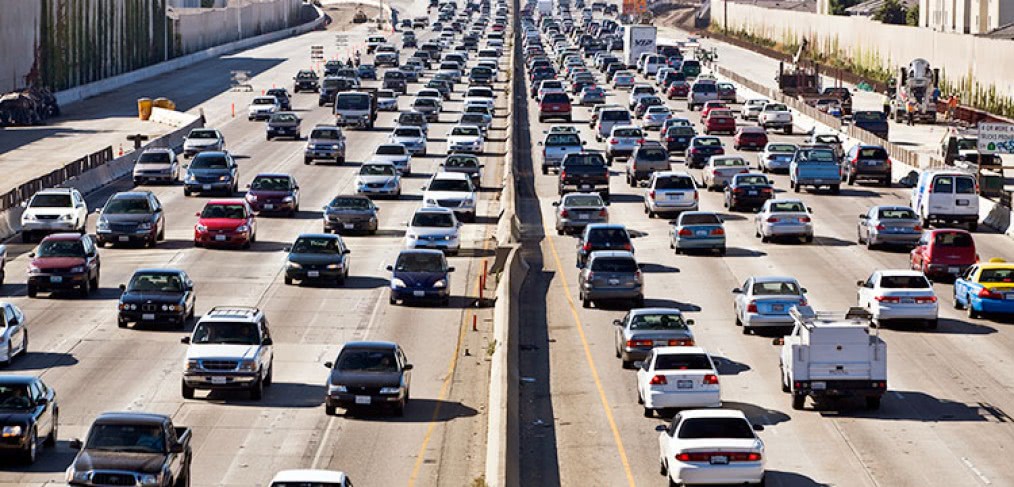
The Car Crisis (Part 1)
How does hometown pride inspire ideas for change? In this three-part series, Los Angeles aficionado Nate Cherry will offer an in-depth look at transportation in Los Angeles using Venice Boulevard as the primary example. Part one will focus on the birth of the city’s car culture and how history has helped Los Angeles become dependent on the automobile.
As a resident of Venice, I use Venice Boulevard every day. It’s my go-to route to get to work, take my kids to school and shuttle them to soccer and swimming practices. While sitting in traffic on this 25-mile stretch of road, I often wonder what it would be like if navigating it was a less arduous task. It’s hard to believe that what now seems unimaginable was once a reality for travelers along Venice Boulevard.
At the turn of the 20th century, street cars, and more specifically, red cars ruled this road. As a primary route to the beach, Venice Boulevard was the perfect place for railroad magnate Henry Huntington to begin buying land and expanding public transportation service into Southern California. The Balloon Route was one of the most popular lines and ran from downtown through Hollywood, Santa Monica, Venice Beach, Redondo Beach and back to L.A. Much of this route was located on present-day Venice Boulevard.
Years later, the Olmsted brothers, along with Harland Bartholomew tried their hand at developing a more efficient transportation system for Los Angeles. After extensive research, they concluded that the city was in desperate need of a comprehensive street and open space network. In 1924, they released a “Major Traffic Street Plan” for L.A. which aimed to turn an “ill-arranged collection of streets into a well ordered system of traffic arteries by fixing the system of north-south, east-west boulevards at one-mile coordinates.” This method still remains the primary surface street route for regional transportation. The group also presented “Parks, Playground and Beaches for the Los Angeles Region” in 1930. This plan outlined the need to preserve open spaces and identified a political and funding structure for implementation, but never caught the attention of city leaders.
By the 1950s, it was clear that automobile ownership had become part of the American dream and the premier means of transportation in L.A. As a result, red car service to some communities was discontinued and tracks were paved over as trains had to yield to increasing automobile traffic. The explosive growth and sprawl in L.A. in the postwar years furthered the car dependent culture as freeways were built to accommodate the huge increase in automobile traffic.
Images (top to bottom): eatsleepwork.com; shoreline5089.com


2 comments